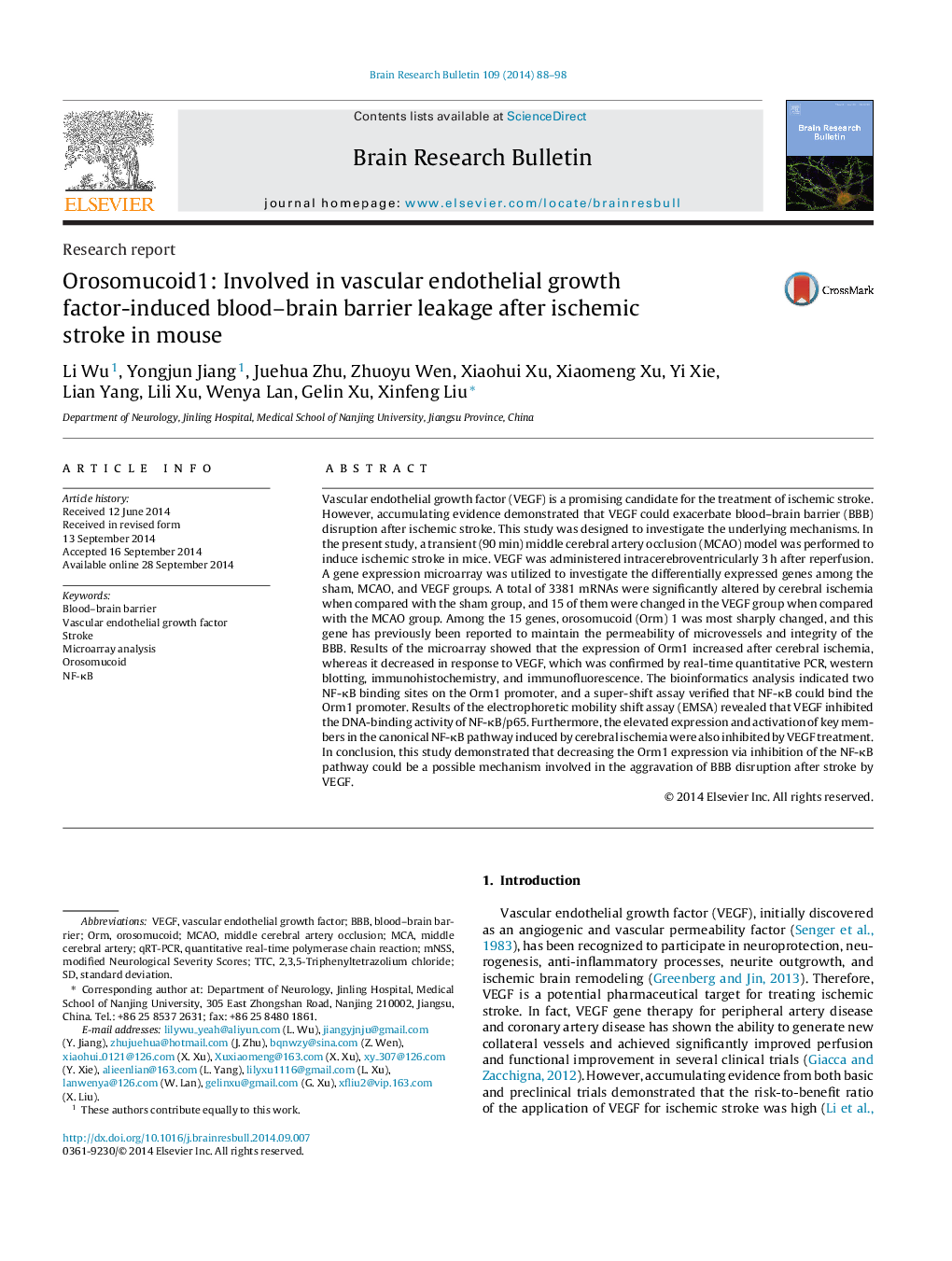| کد مقاله | کد نشریه | سال انتشار | مقاله انگلیسی | نسخه تمام متن |
|---|---|---|---|---|
| 6261731 | 1613246 | 2014 | 11 صفحه PDF | دانلود رایگان |

- Early intraventricularly administrated VEGF aggravated blood-brain barrier disruption.
- The expression of 38 genes was influenced by VEGF after ischemic stroke.
- Lower orosomucoid was related to blood-brain barrier disruption aggravated by VEGF.
- VEGF might decrease orosomucoid expression through NF-κB pathway.
Vascular endothelial growth factor (VEGF) is a promising candidate for the treatment of ischemic stroke. However, accumulating evidence demonstrated that VEGF could exacerbate blood-brain barrier (BBB) disruption after ischemic stroke. This study was designed to investigate the underlying mechanisms. In the present study, a transient (90 min) middle cerebral artery occlusion (MCAO) model was performed to induce ischemic stroke in mice. VEGF was administered intracerebroventricularly 3 h after reperfusion. A gene expression microarray was utilized to investigate the differentially expressed genes among the sham, MCAO, and VEGF groups. A total of 3381 mRNAs were significantly altered by cerebral ischemia when compared with the sham group, and 15 of them were changed in the VEGF group when compared with the MCAO group. Among the 15 genes, orosomucoid (Orm) 1 was most sharply changed, and this gene has previously been reported to maintain the permeability of microvessels and integrity of the BBB. Results of the microarray showed that the expression of Orm1 increased after cerebral ischemia, whereas it decreased in response to VEGF, which was confirmed by real-time quantitative PCR, western blotting, immunohistochemistry, and immunofluorescence. The bioinformatics analysis indicated two NF-κB binding sites on the Orm1 promoter, and a super-shift assay verified that NF-κB could bind the Orm1 promoter. Results of the electrophoretic mobility shift assay (EMSA) revealed that VEGF inhibited the DNA-binding activity of NF-κB/p65. Furthermore, the elevated expression and activation of key members in the canonical NF-κB pathway induced by cerebral ischemia were also inhibited by VEGF treatment. In conclusion, this study demonstrated that decreasing the Orm1 expression via inhibition of the NF-κB pathway could be a possible mechanism involved in the aggravation of BBB disruption after stroke by VEGF.
Journal: Brain Research Bulletin - Volume 109, October 2014, Pages 88-98